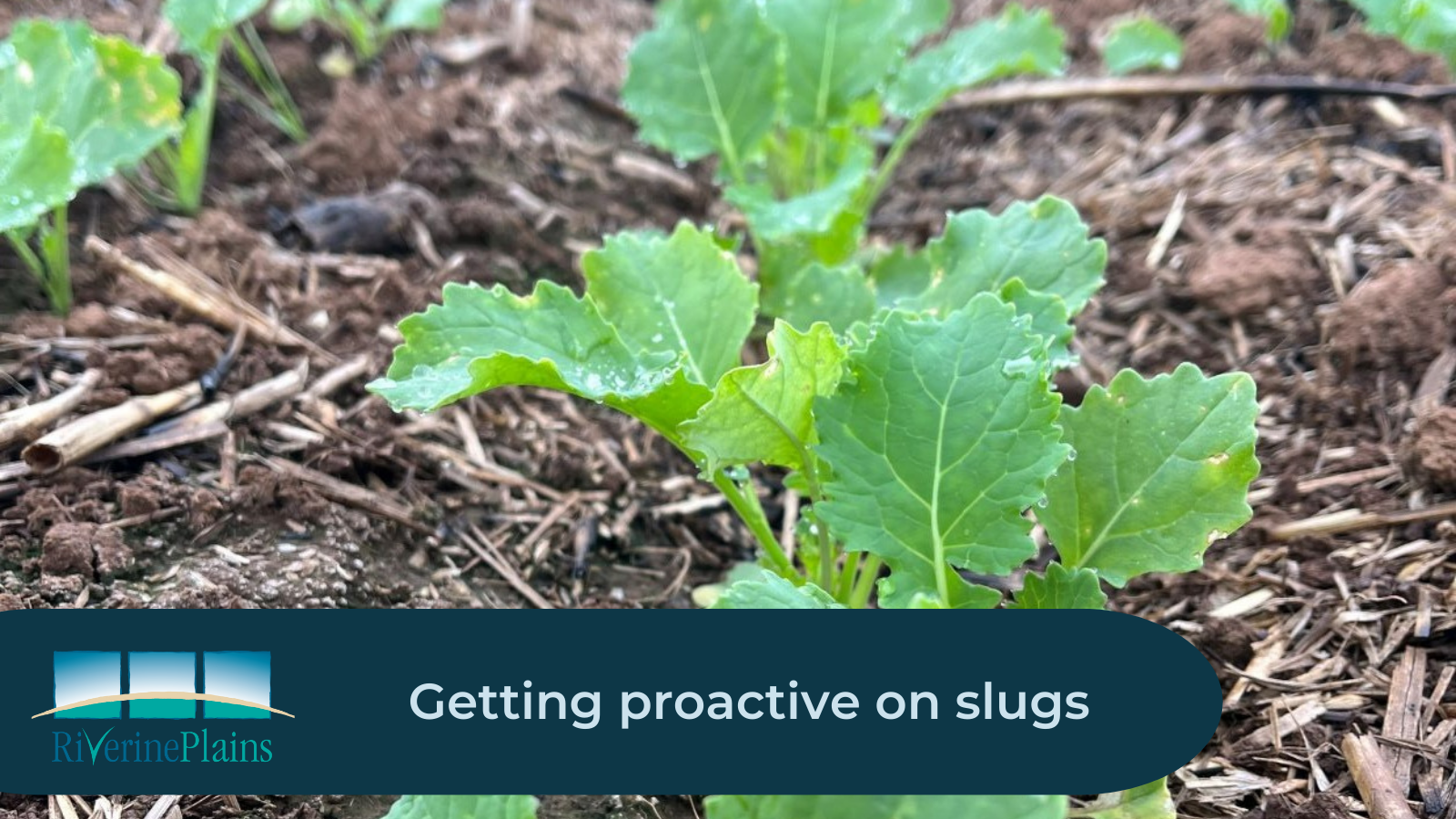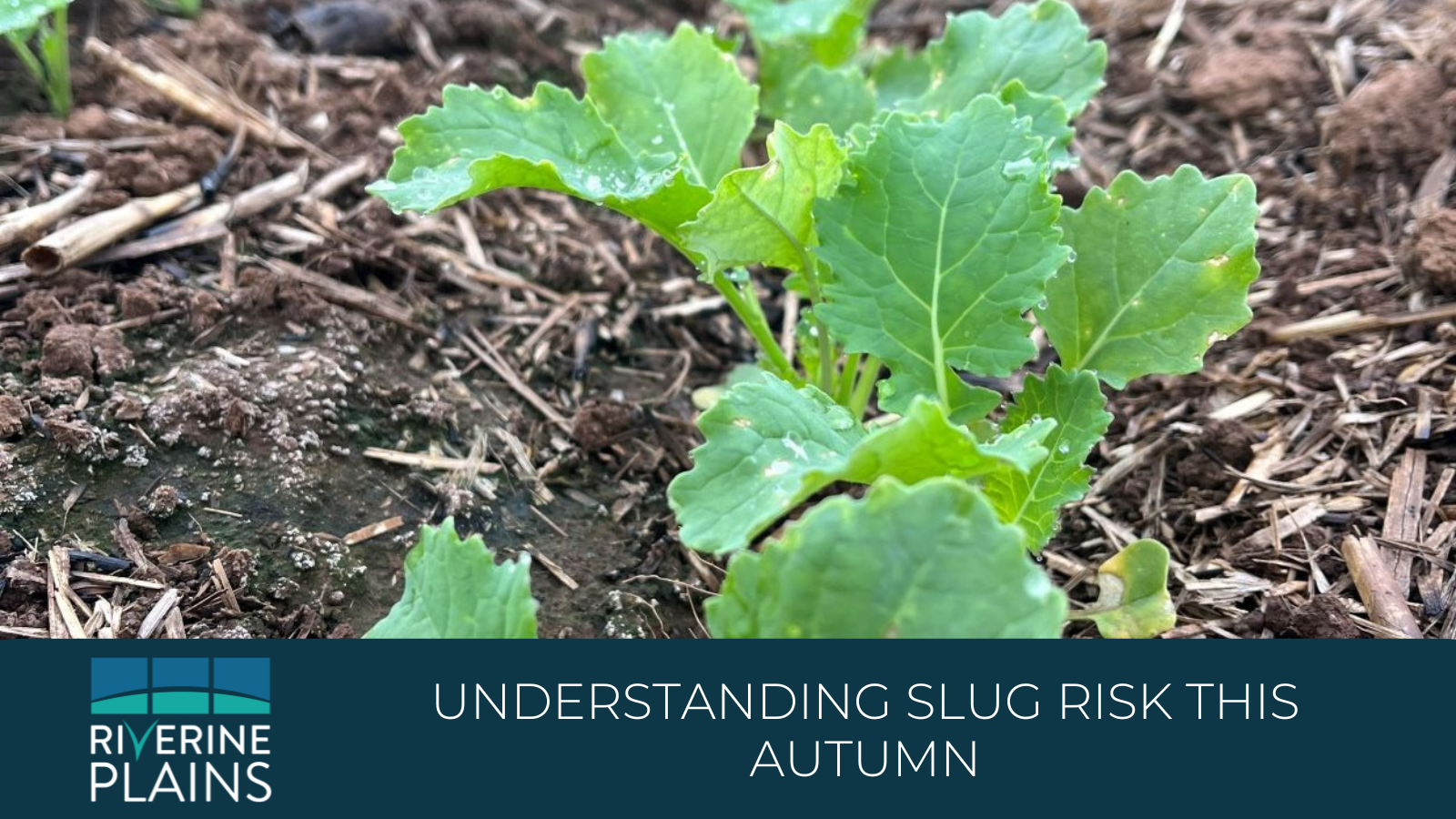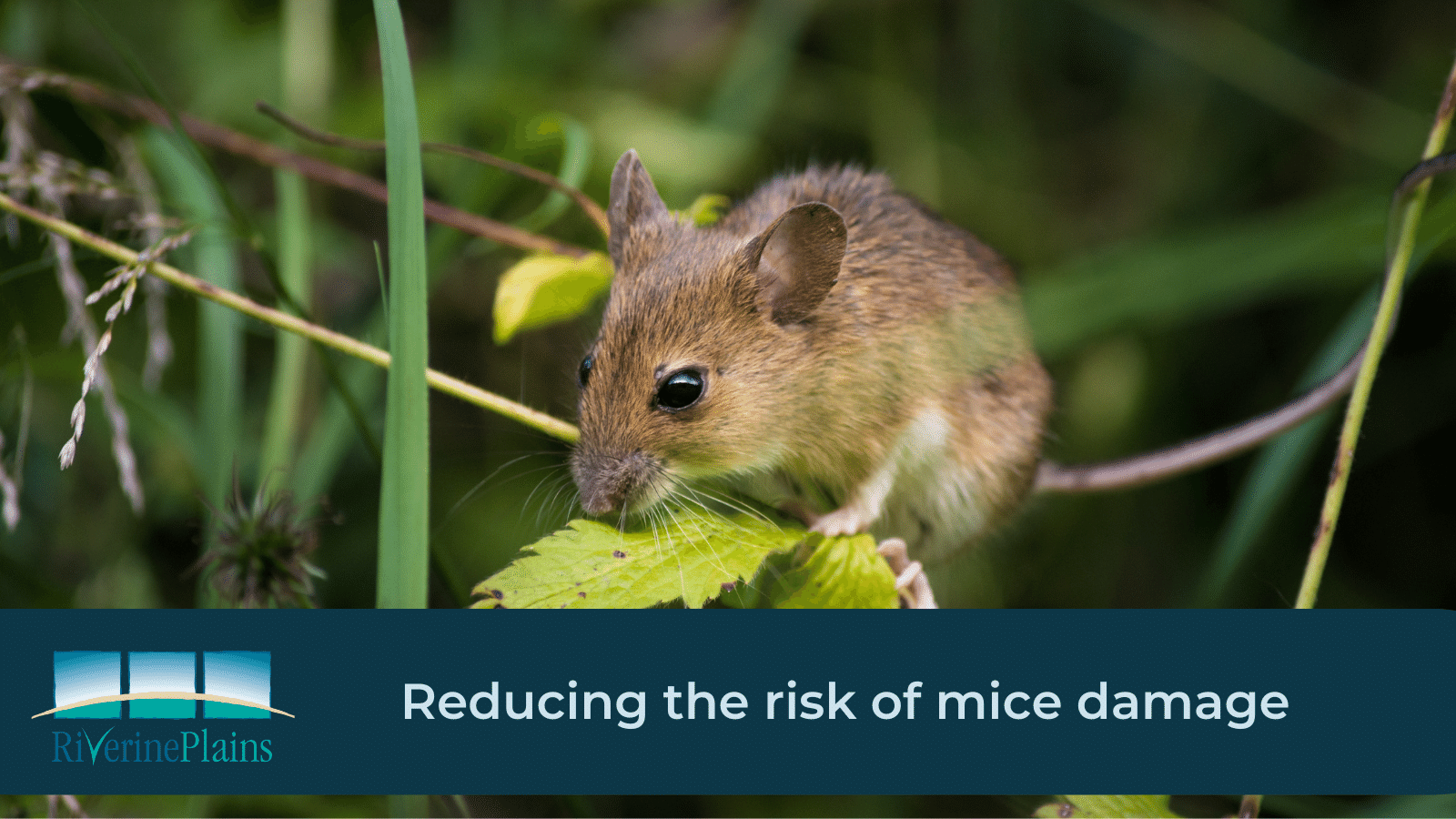Getting proactive on slugs

Key Messages
- Know what you’re dealing with – monitor, monitor, monitor
- Soil moisture data can help predict when slugs will become active
- Biological controls can be useful
- Bait at sowing and approximately four weeks later if required
- Vigour and speed of establishment in canola is important
- Key factors of bait efficacy are chance of encounter and consumption of active
Slugs are one of the main establishment pests in the Riverine Plains, along with earwigs, slaters, millipedes, wireworms, and mice. The first step to controlling any of these pests, particularly slugs, is knowing what you are dealing with.
The most prominent slugs in this region are black keeled slugs. However grey field slugs and brown field slugs are also found in the area.
Black keeled slugs actively burrow into the soil and can survive in moisture at 50-60cm depth, live for 500 days and cause significant damage to crops in a short space of time. Environmental factors such as rainfall, temperature, soil type and condition affect slug numbers and activity.
Why are slugs an issue this year?
Slugs do not have a defined lifecycle, they only lay eggs when conditions are right, and larvae are going to survive. Last year’s cool, wet spring, and many soil moisture profiles remaining high over summer was ideal breeding conditions for slugs. We anticipate population numbers will be high coming into sowing this year.
Ideal conditions for slugs to come to soil surface are:
- minimum 500 mm rainfall in a growing season
- optimum temp 17°C
- soil moisture over 20% up to field capacity when they are most active on the soil surface
Monitoring slug populations
Slugs are mainly active at night, generally coming out around midnight, which makes monitoring more difficult.
- To get a handle on the scale of the problem, start your monitoring in spring. Look for slugs or evidence of slug activity in wheat crops that will be sown to canola the following year. Make a note of where you have seen them.
- Put a rubber mat out – slugs will seek refuge under the mat where conditions are moist and sheltered.
- Use soil moisture probe figures or rainfall data to help determine slug risk.
- Place a line of bait along a seeding furrow and check for dead slugs after a few days. Do this before sowing to determine if slugs have emerged.
However, when monitoring, keep in mind that slug activity decreases once air temperature at ground level falls below 4°C or increases above 21°C.
If dry sowing, the activity of black keeled slugs may not be detected using surface refuges. Black keeled slugs only come to the surface after approximately 50-70mm of rain soaks down to 500mm.
Refuges can underestimate populations, especially where large numbers of juvenile slugs are present. What we see is only what is at the surface, not the total population.
Check different areas of your paddocks. Slugs move around in the soil, so just because they were in an area previously, doesn’t mean they will be there the year after.
Control Options
Start with variety choice when sowing canola – a GM canola variety that has high vigour is less susceptible to damage compared to triazine tolerant (TT) varieties, which establish more slowly.
Increase the seed rate of susceptible crops such as canola, especially in paddocks where slugs have been identified in the previous spring.
Keep on top of your weeds over summer will remove vegetation cover, food and shelter for slugs. Soil conditions also play a role in control. When cultivating, ensure no clods remain on the surface. Cultivation and can be an effective cultural control measure as it destroys habitat whilst the addition of gypsum improves soil structure and provides optimal conditions for crop root growth and establishment.
The only chemical control currently available is bait.
To ensure your bait is as effective as possible, consider the slugs activity levels, attractiveness of bait and number of pellets per unit area. Also make sure that you have used enough product and that what you are using is highly palatable to the slugs.
Pick your bait according to the conditions – a smaller bait size will have larger surface area which enables greater chance of encounter; however, these smaller pellets will break down more quickly, especially after rain. Expensive baits are more rain-fast so may be worth the extra money in the long run.
The best time to bait is generally, after sowing before crop emergence, enabling slugs to be killed before seedlings emerge and damage can be caused.
However, slug emergence can be staggered so continue to monitor, especially after rainfall, and re-bait if required.
When using bait:
- Don’t mix bait with fertiliser in the spreader as they have different densities and do not spread evenly.
- Ensure there is enough moisture on surface to get bait to swell so it releases its active ingredient.
- Avoid applying bait before rain as it will be less effective (the active will wash off).
- Apply bait after rain to target a greater proportion of the slug population
- Ensure your spreader is calibrated correctly, this will prevent under-baiting, which reduces the effectiveness of the bait or spreading too much, which is costly.
- Be aware that mice are known to eat slug bait before the slugs can get to it, therefore you need to continue to monitor after spreading to ensure bait has been effective.
Sources and further reading
WATCH:
Slug baiting for integrated control - PIRSA
Have Slugs Slid Off Your To-Do List? (riverineplains.org.au)


